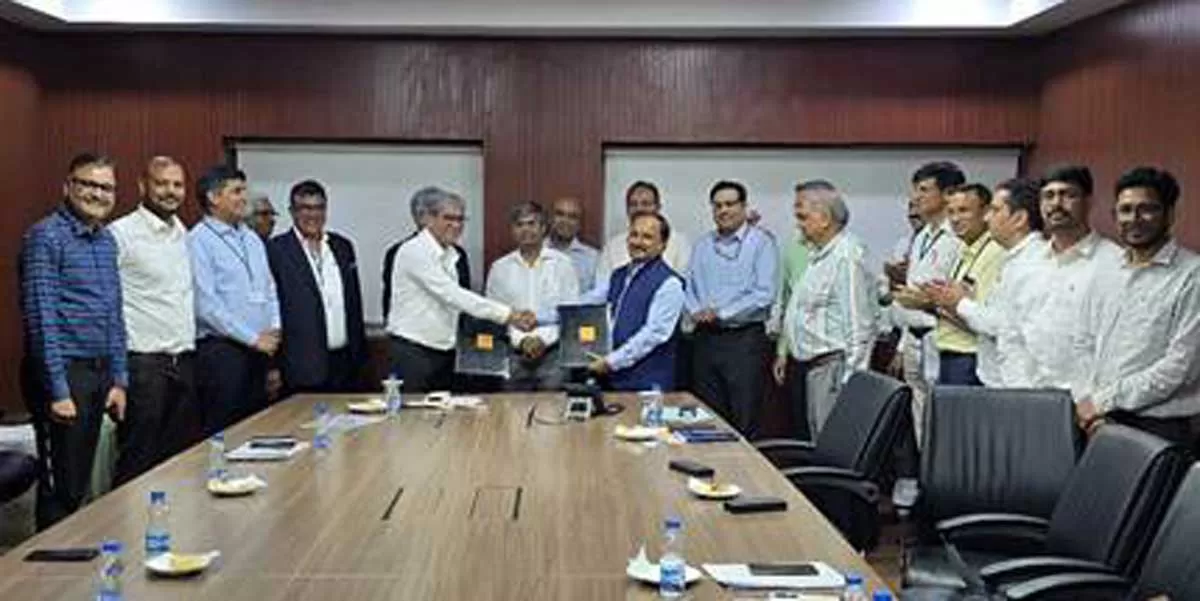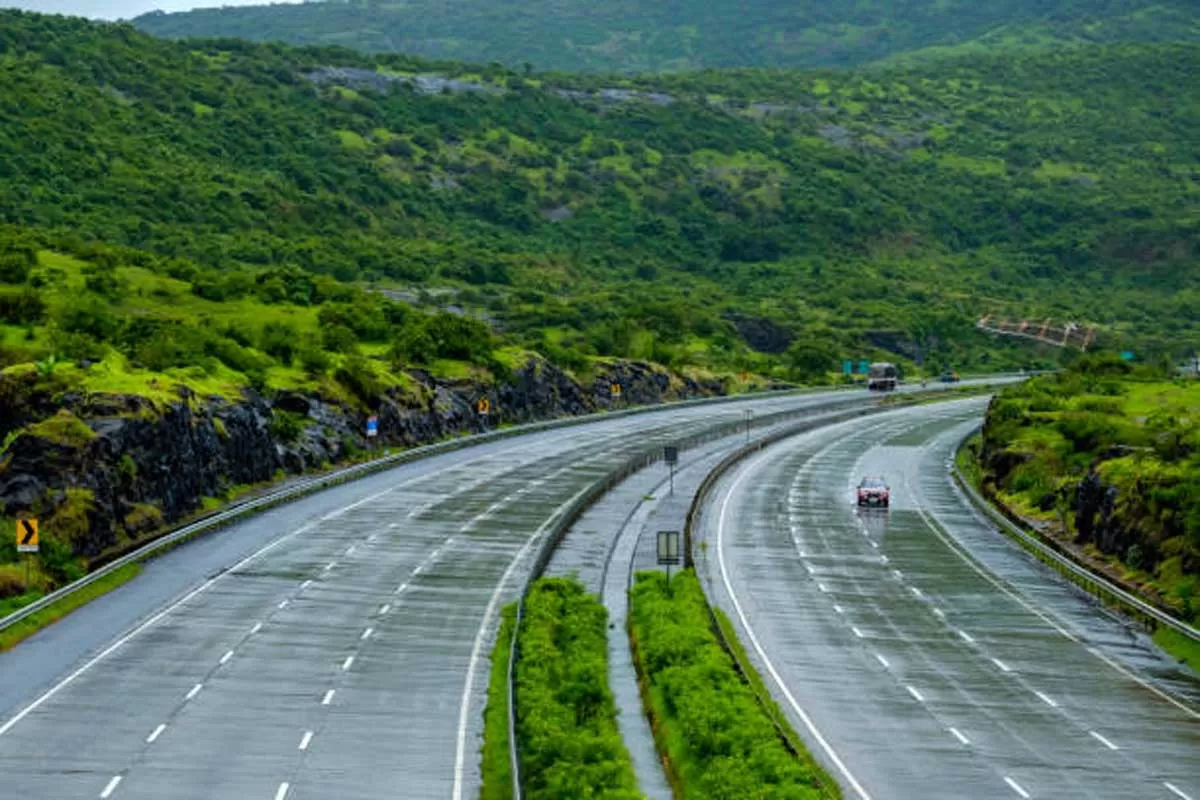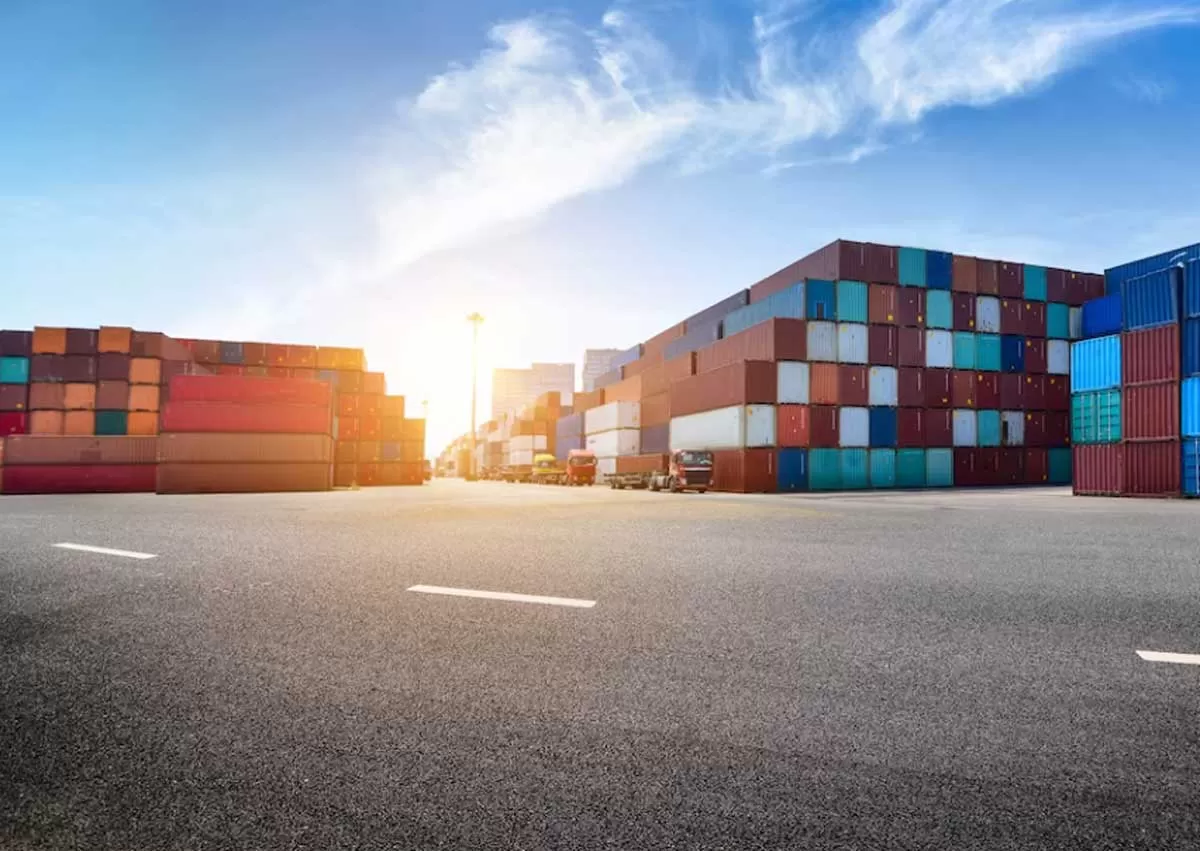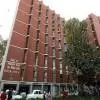- Home
- Real Estate
- Talk of the Town!
Talk of the Town!
With an ever growing population and weak urban planning, the chinks in the infrastructure of our teeming metropolises are already showing. And slowly, townships appear to be emerging as the answer to our urban woes. CW looks deeper and speaks to the people involved.
Urbania will soon consume us. Estimates suggest that by 2030, 40 per cent of India's population will be located in its major cities and metros. By 2040-45, that number is projected to cross the 50 per cent mark, according to the World Bank.
What does this imply for our cities? They are already congested, their fragile infrastructure sagging under the weight of a burgeoning population, not to mention reckless, haphazard real-estate development even as limited land availability remains a given. Many a dream of living in a big city has degenerated into an urban nightmare, thanks to limited access to emergency services, water and power shortages, inadequate parking space and similar woes. In such a scenario, can integrated townships, with their promise of a premium lifestyle, be the solution? Today, the concept seems to be increasingly finding favour with the developer fraternity.
But this wasn't always the case, argues Niranjan Hiranandani, Managing Director, Hiranandani Group of Companies, a pioneer of integrated townships in India. "Today, people understand what a township is but back then, we had to fight to get the concept approved by the government. There were so many issues; so many questions. Why do you need a school? Why should you make broad roads? Why should you provide so much parking?"
While many of these questions have now been answered, it is undeniable that planning a township is no cakewalk - several factors need to be taken into consideration by developers.
Land to build on
According to Manoj Goyal, Vice-President, Raheja Developers Ltd, "There are two ways of acquiring land normally; one is where you pay the full amount, take the title and become the owner, the other is where you collaborate with the land owner to have an owned and joint development." Raheja's upcoming township in Haryana, Raheja Sohna City, is an example of owned and joint development.
Meanwhile, Adani Infrastructure and Developers Pvt Ltd owns 100 per cent of the land of Shantigram, launched in the past six months in Ahmedabad. Chief Executive Officer Tarwinder Singh, explains, "The land was privately acquired over a period of four to five years, and is owned by a special purpose vehicle [SPV] executing the project; the SPV is part of the Adani Group and was created for the purpose."
Godrej Properties follows a JV model in most of its projects. "This too is a JV where we have partnered with the land owner," says Executive Director Pirojsha Godrej about the recently launched Phase III of Godrej Garden City. "They have contributed the value of their land, while we bring in construction, finance, marketing and brand capabilities. The revenue will be shared." Godrej emphasises that the company enters into a JV only after land is agglomerated.
Clearance to progress
The developer needs to apply for a license to acquire more than 100 acre of land, says Goyal. The Town and Country Planning Department in Haryana scrutinises ownership and the proposed layout according to the master plan before awarding the license. The license is proof that the land has been changed from agricultural to residential. "All legalities as per the Haryana Development Act including change of land use, license, building plan approval, layout and zoning plans, environment and forest clearance, and height clearance from the Airport Authority of India are applicable. There is no concession for any development by a private developer in Haryana."
"In Gujarat, townships have to be approved by the state government and urban development bodies empowered to implement and monitor regulations," says Singh. "In Ahmedabad, AUDA is the nodal agency for clearances and we have to strictly follow its guidelines. Typically, township development is controlled by a mix of township policy and AUDA regulations, and we have to obtain all necessary approvals."
For his part, Godrej explains that each state has a township policy stating the municipal, legal and other obligations, minimum size requirements, FSI and other benefits. The complicated part is often agglomeration of land and things that developers don't do themselves.
The brass tacks
Usually, townships are an eclectic mix of residential plots, independent villas, terrace homes, multi-storeyed group housing, commercial (office) space, and retail and community facilities. "The cost of these components depends on the volume of that particular segment," says Goyal. "It also varies acc-ording to design and specifications. Sohna City is mid-segment housing where we will develop and sell around 10 million sq ft. A high-rise group housing tower would cost about Rs 1,200 per sq ft to construct."
For Singh, township development is a long-drawn-out process, where you need to dedicate areas for residential development, commercial, retail, education, medical, sports and recreation. There is also a fixed component, the economically weaker section (EWS). "Seventy per cent of Shantigram's area is dedicated to residential development comprising two and three BHK apartments. The upper segment is restricted to just 12 to 15 per cent; the central core of this segment has a nine-hole golf course, and high rises and bungalows will be developed along its periphery. The infrastructure, whether it is road networking, water supply, sewage, drainage or electrical ducting, is developed by us, and costs anywhere between Rs 100 and Rs 150 per sq ft. Again, it depends on how much we want to give back to society. We propose to establish a water supply system with 20 million litre per day capacity, among other things."
And according to Godrej, "When you are building a township, you must have everything a resident would need in close proximity, from retail facilities and dining options to hospitals and schools. The complexity increases and sustainability becomes all the more important. While the residential component can be financed through resale, the commercial component needs upfront investment, and infrastructure costs too are higher. While building costs are like any other project and depend on how high-end you want to make the project, infrastructure costs are in the range of Rs 100 to Rs 200 per sq ft."
On-ground infrastructure
In a township, while the developer must provide for infrastructural facilities including water supply, drainage, power, communication, water recycling, sewage treatment, garbage disposal, security and maintenance, "We will also provide schools, a dispensary, taxi stand, police booth and an old-age home," says Singh. "We plan to deliver potable water on tap for which water from the Narmada Canal will flow to our water site, Water Lily, from where it will flow to our treatment plant to be purified and ultimately get pushed back to our apartments through the system. We also plan on elect-rical distribution through underground cables, infotainment using fibre optics, a 1.5-m-long promenade along the golf course, among others."
Meanwhile, Godrej lays stress on the nuances. "Roads and how they connect into the city's existing roads, water supply, power, drainage, garbage disposal are key requirements," he points out. "In case of Godrej Garden City, we worked with world-renowned architectural firm, Skidmore Owings and Merrill (SOM). Having worked on projects like Dubai's Burj Khalifa - the world's tallest building - getting such global expertise is a big advantage."
Going green
While the additional cost of constructing a single green building is anywhere between Rs 200 and Rs 300 per sq ft, Goyal believes planning a green township is comparatively easier, simply because a township offers greater space for water recycling and rainwater harvesting. On the other hand, Singh is more cautious. "If constructing one green building entails an additional cost of 10 to 15 per cent, making an entire township green would be extremely costly," he reasons. "However, our township will have zero effluent discharge, meaning whatever water is used in the system will be treated and reused for irrigation of the golf course and other greens envisaged. Nearly 50,000 trees will be planted and we will have rainwater harvesting, greener flushing and solar powered street lights."
Godrej has a different take on the subject, "We have partnered with the Clinton Foundation and our township is one of the 16 climate positive developments around the globe," he says with pride. "Contrary to popular perception, many parts of green design and green thinking entail absolutely no cost; for instance, providing chajjas ensures that windows don't get direct sunlight. However, certain strategies like doing a LEED Gold or LEED Platinum building involve spending a considerable sum. Yet, I would say that the resultant energy savings more than pay back for the additional investment."
Signature style
With so many townships coming up, what distinguishes one from the other? Hiranandani responds, "We pride ourselves on providing a holistic life, complete with all amenities. Actually, each township has different requirements. If there are many schools in the vicinity, it is not necessary to put up a school within your township. However, as we have been doing this for a pretty long time and people have grown to expect very high standards from us, we do all of it anyway."
"It's the concept that makes a difference," emphasises Goyal. "Planning a club or community centre is commonplace but planning a high-tech green township that provides security and comfort is bound to grab eyeballs." Singh goes on to explain, "Eighty per cent of the area of our township will be left almost open. The land mass will be divided into pockets, with themes inside these pockets for residents to enjoy, i.e. Water Lily, Meadows, the heavy forest we are creating over six to seven acre, to name a few." Meanwhile, Godrej elaborates, "Our project is envisaged as part of the history and fabric of Ahmedabad, which explains the tagline, 'Godrej Garden City Ek Apnu Ahmedabad'. At the same time, it has its own identity, a sense of modernity and a futuristic outlook. The biggest differentiator you can provide is open, green spaces that our cities lack."
Architectural inputs
Any concept needs the right professional touch to make it sing. "We have an in-house team of around 50 to 60 qualified architects," explains Goyal. "We are also trying to get an international architect on board, who will give final inputs and bring valuable expertise to our project. We have briefed our architects to focus on quality living and plan in a manner that caters to end-users. Planning is typically based on your end-users, local conditions, potential to attract outside buyers and market competition. Development norms require that a minimum 45 per cent of the total planned area be kept as open space. We have asked our landscape architects, also in-house, to use this space for theme parks, play areas, jogging tracks and water bodies."
According to Singh, "The concept is envisaged in-house before engaging the services of an architect, who has to then develop the concept within those parameters and conforming to AUDA regulations. As our township is divided into different pockets, each pocket is designed by a different architect; within that pocket, the architect engages his own landscape architect, whose qualifications are first ratified by us."
For his part, Godrej says, "Our brief to SOM was to create a residential community within the city, one that retains the city's characteristics while having its own unique lifestyle. Sustainability too was an important aspect of the brief. Landscaping was done by SOM's landscaping practice, helped by local architects. They were briefed that it isn't so much about the amount of space as quality. We asked them to ensure that all areas had a good number of trees and that there were quite a few parks including a large, 10-acre central park."
As for materials used in developing townships, they are more or less the same as in individual construction. It is the developers who decide on material purchase, based on factors such as cost, value for money, aesthetics, whether the architect likes the material, whether it can be sourced locally, whether it goes with the other materials being used and, of course, sustainability.
A joint effort
Township development needs government support. "Funding is done through our own internal accruals as well as borrowings from banks and financial institutions but the biggest financial risk involved in a township is development charges. With cost escalation being what it is, you have a historical price and it may appear to be a profit, but when you go again to buy land, it
becomes too expensive," rues Hiranandani. "We may do the internal infrastructure but for externalities, we seek the cooperation of the government."
To this, Goyal adds, "All our projects are funded through internal accruals. There are many financial risks involved, from land acquisition to completion of the project; in fact, risk is higher once the township is approved because of the involvement of government agencies, private parties and buyers."
Godrej too weighs in, saying, "As most of our projects follow the JV model, our investment is a lot lesser than if we were buying land on an outright basis. Our projects are funded through a mix of our own equity from internal accruals and some construction debt. If you make sure you get all the regulatory approvals though, risks can be avoided."
Advantage townships
All considered, townships seem to be a viable alternative to our bursting-at-the-seams cities. Hiranandani is particularly enthusiastic when he says, "No matter how distinguished the building you construct, you cannot change the quality of life of its residents. Only when you build an entire township can you that." Goyal echoes this sentiment, saying, "A township is an opportunity to do all kinds of real-estate development in one place; it's a city within a city. Besides, in the long term, it gives greater mileage to the brand."
"A township is an altogether different thought process," iterates Singh. "Look at the mess Mumbai is in; there is no concerted or integrated approach to development. In contrast, you can have planned development in a township, lay down all the services, provide customers from all segments with a unique lifestyle." Godrej adds, "A township affords efficiencies of scale. You can plan areas and amenities such that they make sense, zone the development more efficiently. Also when buying materials, you know you can get good prices because of the volumes being purchased. I would say the two key advantages of townships are effective planning and economies of scale." Other than these tangibles, there is the ultimate intangible: quality of life.
"Landscaping should enhance the surroundings."
According to Suvarna Sathe, Landscape Architect, Sathe Architects, who has worked on the initial stage of the Essar Township in Jamnagar and is currently working on a township project in Goa Betim, "We usually work in conjunction with the main architect and urban planner. Mostly, the master plan is roughly made, and we are consulted with regard to creation of the landscape. Often, the principal architect makes the design and then consults us with regard to the kind of landscaping required for various open spaces. Also, at the initial stage, we do get involved with land use, road gradation and green belts as per the land topography."
While a lot is said about the importance of landscape design, what does it really entail? "One of the main things involved in landscape design is the orientation of plants and soil to local areas," answers Sathe. "It is very important to ensure that your work enhances the surroundings and does not ruin them. For example, if there is a sort of hill at a site, I would not want to ruin it by cutting it down. Instead, I would make the area look more aesthetic and highlight its naturalness. In one of my projects in Mangalore, I consulted local horticulturists before deciding on which plants to use. At the beginning of my career, a resort was to be built on a slope at a 45° angle. I made cuts in the hill and created the landscape accordingly."
What are the various components of landscape design? "We look at everything, whether it is the road, the trees or the shading of the road and the water bodies," she says. "Although the width and length of the road are already decided by the main architect, according to our design, we discuss at length how much space we as landscape architects require in terms of avenue plantation, pathways, space for trees and seating."
With most townships located near highways, blocking out air and sound pollution is important. This is usually done through the use of green belts where it is important to decide on the kind and number of trees within these belts. "While landscaping costs vary from project to project, on an average, they are in a proportion of 60:40, the latter favouring landscape," explains Sathe. "Although planning is the first step, by the time the rest of the infrastructure is in place, costs may have increased or material availability may be affected resulting in cutting corners in landscaping costs. This is a common problem we face."
Architect's view
While building a township, the responsibility of executing the developer's brief while adding that unique personal touch remains solely with the architect. What is the scope of an architect's involvement?
Master plan: "We see the orientation of land with respect to the sun and wind direction, and the way major roads approach the site," says Sanjay Puri, Principal Architect, Sanjay Puri Architects, who is currently working on the 1,500-acre Global City in Virar, a combined venture between Evershine Builders and Rustomjee. "How you take the approach road further into the township is a matter of key interest, as are movement within the township, creation of open spaces and how they will be perceived by residents. Again, open spaces work at two levels; a macro level for the entire township and an individual level, where the entire landmass is subdivided into groups of buildings or sectors."
According to Sanjay Bhardwaj, Director, Morphogenesis, who has worked on townships such as Renaissance and Uttorayan (Siliguri), "For Renaissance, the client already had some idea regarding the number and size of plots, the apartment mix and the amount of commercial and institutional space. Besides, there were other guidelines from the government that we had to bear in mind. We decided to focus on sustainability; on designing the township such that each phase felt self-reliant and complete while carrying the potential for modification; and significantly, on the change factor as these projects are typically spread over five to 10 years and must be adaptable to change."
Design elements: One has to look at the fine print, says Puri, "Should the approach road enter straight into the township? Should it come in for a bit and then go around a huge focal playground before entering the various sectors? When planning
for public utilities, say schools or shopping centres, how does one arrive at the population of the township? The decision is usually taken on the basis of overall FSI of the plot, area, an approximation of the number of apartments coming up, the number of users and so on."
According to Bhardwaj, "The major components of a township include residential, commercial and institutional. The residential component needs to have the right layout and orientation, provide green areas, and a sense of community, not to mention foster the feeling of being able to walk to any place within the township. Commercial is more to do with visibility, viability, and serviceability, and tends to rely upon the existing infrastructure."
Landscaping: There's no denying the importance of landscaping in a township. "When creating a township, you have a chance to create a whole environment," says Puri. "The key is to make it look like a large open space filtering into smaller sectors. Possibly, the focal point should be a large open ground, capable of hosting anything from a rock show to a public rally to a prayer meeting or even allowing residents to walk and play. The look should be as simple and natural as possible. The maximum you could do is plant trees on the boundary. For the township to be eco-friendly, cut down on the usage of cars with roads that are sheltered by trees on both sides so people can walk to the market, etc."
In Bhardwaj's view, "Landscape is extremely important; it should be focused, long lasting, with minimal reliance on resources like water. The direction of the road and whether you want to discourage fast moving traffic decide which part of the road gets shaded and the kind of trees used. Security lighting has to be provided without wasting energy. Recycled water should be used for maintaining the landscape. Green belts double up as additional drainage areas to prevent overburdening of the existing drainage system. For the Uttorayan township, which is built on a tea estate in Siliguri, a place that gets very heavy rainfall every year, you will not find a single drain on the township more than 5 inches deep; we have achieved this feat purely through sloping and recharging of land as well as optimum use of green areas."
Green canvas: "The incremental costs of going green depend on how far you are willing to go; there are things that cost nothing and others that cost a lot," explains Puri. "For example, if you make sure every apartment faces north, you've ensured the apartments are cooler and require lower AC consumption. On the other hand, solar panels are expensive. The saving grace is that these expenses will be paid off in about five years. Proper rainwater harvesting ensures you don't depend on the BMC water supply but it costs money to collect rainwater. Ultimately, it all depends on the builder and whether he perceives any benefits."
Bhardwaj goes on to elaborate, "In Renaissance, we have done away with overhead water tanks and pump fresh water to each and every house instead. Wastewater is collected, treated and reused for horticulture and flushing. There is no rainwater discharged out of the site at Renaissance and Uttorayan. Renaissance even has a centralised diesel generator back-up during power cuts. A unique feature we have introduced is the wetland system, where wastewater is reused to create lakes and marshes, helping regenerate some of the indigenous flora and fauna, and bringing back biodiversity to the land." According to him, there are no additional costs of incorporating green. "We would incur costs only if we were to, say, put up a mini hydel power plant to generate electricity on the site. All that we are doing is being sensible, practical and more innovative."
Contractor's view
On the ground, it's the contractors who actually get things done in township projects...
The role of a contractor encompasses planning phases of construction and infrastructure, planning and interlinking services required, segregating labour and material movement between phases, and handing over the phases, according to R Vasudevan, Managing Director, Vascon Engineers Ltd, that has completed Marigold, a mixed-use township in Kalyani Nagar, among others.
"In building a township, infrastructure services, roads, drainage, garbage disposal, water supply and security are very important," he explains. "We have to plan for the provision of these services in a phased manner. We have to also plan for material and movement of labour, especially when handing over part phases of the project. Once the people have moved in, we have to work in a different environment, causing them the least disturbance. With the exception of the Workman Compensation Act, safety and cleanliness on site, we don't really deal with government clearances."
Several contractors work simultaneously within a township project, and the developer has to coordinate for the drawings and execution. Regarding equipment used, Vasudevan says, "It is mostly owned by us although we do resort to short-term leasing
during emergencies. We also do block model studies and environment impact assessments, among others."
Given the huge labour crunch the construction industry is currently facing, how do contractors acquire manpower for township projects? "We depend on migratory labour along with local unskilled labour," reveals Vasudevan. "Thanks to the lack of skilled labour, we have started spending more and more time on designing construction-friendly buildings."
- Construction
- Update
- Portal
- Magazine
- CW-India
- June
- 2011
- India
- infrastructure
- urban planning
- World Bank
- real estate
- Niranjan Hiranandani
- townships
- Manoj Goyal
- Raheja Developers Ltd
- Haryana
- Raheja Sohna City
- Adani Infrastructure and Developers Pvt Ltd
- Ahmedabad
- Godrej Properties
- Pirojsha Godrej
- AUDA
- Shantigram
- investment
- Skidmore Owings and Merrill
- Godrej Garden City
- Burja Khalifa
- rainwater harvesting
- LEED
- Sustainability
- Mumbai
- Suvarna Sathe
- Sathe Architects
- Essar Township
- Jamnagar
- Goa Betim
- Mangalore
- Sanjay Puri
- Global City
- Virar
- Sanjay Bhardwaj
- Morphogenesis
- Siliguri
- Uttorayan
- R Vasudevan
- Vascon Engineers Ltd
With an ever growing population and weak urban planning, the chinks in the infrastructure of our teeming metropolises are already showing. And slowly, townships appear to be emerging as the answer to our urban woes. CW looks deeper and speaks to the people involved. Urbania will soon consume us. Estimates suggest that by 2030, 40 per cent of India's population will be located in its major cities and metros. By 2040-45, that number is projected to cross the 50 per cent mark, according to the World Bank. What does this imply for our cities? They are already congested, their fragile infrastructure sagging under the weight of a burgeoning population, not to mention reckless, haphazard real-estate development even as limited land availability remains a given. Many a dream of living in a big city has degenerated into an urban nightmare, thanks to limited access to emergency services, water and power shortages, inadequate parking space and similar woes. In such a scenario, can integrated townships, with their promise of a premium lifestyle, be the solution? Today, the concept seems to be increasingly finding favour with the developer fraternity. But this wasn't always the case, argues Niranjan Hiranandani, Managing Director, Hiranandani Group of Companies, a pioneer of integrated townships in India. Today, people understand what a township is but back then, we had to fight to get the concept approved by the government. There were so many issues; so many questions. Why do you need a school? Why should you make broad roads? Why should you provide so much parking? While many of these questions have now been answered, it is undeniable that planning a township is no cakewalk - several factors need to be taken into consideration by developers. Land to build on According to Manoj Goyal, Vice-President, Raheja Developers Ltd, There are two ways of acquiring land normally; one is where you pay the full amount, take the title and become the owner, the other is where you collaborate with the land owner to have an owned and joint development. Raheja's upcoming township in Haryana, Raheja Sohna City, is an example of owned and joint development. Meanwhile, Adani Infrastructure and Developers Pvt Ltd owns 100 per cent of the land of Shantigram, launched in the past six months in Ahmedabad. Chief Executive Officer Tarwinder Singh, explains, The land was privately acquired over a period of four to five years, and is owned by a special purpose vehicle [SPV] executing the project; the SPV is part of the Adani Group and was created for the purpose. Godrej Properties follows a JV model in most of its projects. This too is a JV where we have partnered with the land owner, says Executive Director Pirojsha Godrej about the recently launched Phase III of Godrej Garden City. They have contributed the value of their land, while we bring in construction, finance, marketing and brand capabilities. The revenue will be shared. Godrej emphasises that the company enters into a JV only after land is agglomerated. Clearance to progress The developer needs to apply for a license to acquire more than 100 acre of land, says Goyal. The Town and Country Planning Department in Haryana scrutinises ownership and the proposed layout according to the master plan before awarding the license. The license is proof that the land has been changed from agricultural to residential. All legalities as per the Haryana Development Act including change of land use, license, building plan approval, layout and zoning plans, environment and forest clearance, and height clearance from the Airport Authority of India are applicable. There is no concession for any development by a private developer in Haryana. In Gujarat, townships have to be approved by the state government and urban development bodies empowered to implement and monitor regulations, says Singh. In Ahmedabad, AUDA is the nodal agency for clearances and we have to strictly follow its guidelines. Typically, township development is controlled by a mix of township policy and AUDA regulations, and we have to obtain all necessary approvals. For his part, Godrej explains that each state has a township policy stating the municipal, legal and other obligations, minimum size requirements, FSI and other benefits. The complicated part is often agglomeration of land and things that developers don't do themselves. The brass tacks Usually, townships are an eclectic mix of residential plots, independent villas, terrace homes, multi-storeyed group housing, commercial (office) space, and retail and community facilities. The cost of these components depends on the volume of that particular segment, says Goyal. It also varies acc-ording to design and specifications. Sohna City is mid-segment housing where we will develop and sell around 10 million sq ft. A high-rise group housing tower would cost about Rs 1,200 per sq ft to construct. For Singh, township development is a long-drawn-out process, where you need to dedicate areas for residential development, commercial, retail, education, medical, sports and recreation. There is also a fixed component, the economically weaker section (EWS). Seventy per cent of Shantigram's area is dedicated to residential development comprising two and three BHK apartments. The upper segment is restricted to just 12 to 15 per cent; the central core of this segment has a nine-hole golf course, and high rises and bungalows will be developed along its periphery. The infrastructure, whether it is road networking, water supply, sewage, drainage or electrical ducting, is developed by us, and costs anywhere between Rs 100 and Rs 150 per sq ft. Again, it depends on how much we want to give back to society. We propose to establish a water supply system with 20 million litre per day capacity, among other things. And according to Godrej, When you are building a township, you must have everything a resident would need in close proximity, from retail facilities and dining options to hospitals and schools. The complexity increases and sustainability becomes all the more important. While the residential component can be financed through resale, the commercial component needs upfront investment, and infrastructure costs too are higher. While building costs are like any other project and depend on how high-end you want to make the project, infrastructure costs are in the range of Rs 100 to Rs 200 per sq ft. On-ground infrastructure In a township, while the developer must provide for infrastructural facilities including water supply, drainage, power, communication, water recycling, sewage treatment, garbage disposal, security and maintenance, We will also provide schools, a dispensary, taxi stand, police booth and an old-age home, says Singh. We plan to deliver potable water on tap for which water from the Narmada Canal will flow to our water site, Water Lily, from where it will flow to our treatment plant to be purified and ultimately get pushed back to our apartments through the system. We also plan on elect-rical distribution through underground cables, infotainment using fibre optics, a 1.5-m-long promenade along the golf course, among others. Meanwhile, Godrej lays stress on the nuances. Roads and how they connect into the city's existing roads, water supply, power, drainage, garbage disposal are key requirements, he points out. In case of Godrej Garden City, we worked with world-renowned architectural firm, Skidmore Owings and Merrill (SOM). Having worked on projects like Dubai's Burj Khalifa - the world's tallest building - getting such global expertise is a big advantage. Going green While the additional cost of constructing a single green building is anywhere between Rs 200 and Rs 300 per sq ft, Goyal believes planning a green township is comparatively easier, simply because a township offers greater space for water recycling and rainwater harvesting. On the other hand, Singh is more cautious. If constructing one green building entails an additional cost of 10 to 15 per cent, making an entire township green would be extremely costly, he reasons. However, our township will have zero effluent discharge, meaning whatever water is used in the system will be treated and reused for irrigation of the golf course and other greens envisaged. Nearly 50,000 trees will be planted and we will have rainwater harvesting, greener flushing and solar powered street lights. Godrej has a different take on the subject, We have partnered with the Clinton Foundation and our township is one of the 16 climate positive developments around the globe, he says with pride. Contrary to popular perception, many parts of green design and green thinking entail absolutely no cost; for instance, providing chajjas ensures that windows don't get direct sunlight. However, certain strategies like doing a LEED Gold or LEED Platinum building involve spending a considerable sum. Yet, I would say that the resultant energy savings more than pay back for the additional investment. Signature style With so many townships coming up, what distinguishes one from the other? Hiranandani responds, We pride ourselves on providing a holistic life, complete with all amenities. Actually, each township has different requirements. If there are many schools in the vicinity, it is not necessary to put up a school within your township. However, as we have been doing this for a pretty long time and people have grown to expect very high standards from us, we do all of it anyway. It's the concept that makes a difference, emphasises Goyal. Planning a club or community centre is commonplace but planning a high-tech green township that provides security and comfort is bound to grab eyeballs. Singh goes on to explain, Eighty per cent of the area of our township will be left almost open. The land mass will be divided into pockets, with themes inside these pockets for residents to enjoy, i.e. Water Lily, Meadows, the heavy forest we are creating over six to seven acre, to name a few. Meanwhile, Godrej elaborates, Our project is envisaged as part of the history and fabric of Ahmedabad, which explains the tagline, 'Godrej Garden City Ek Apnu Ahmedabad'. At the same time, it has its own identity, a sense of modernity and a futuristic outlook. The biggest differentiator you can provide is open, green spaces that our cities lack. Architectural inputs Any concept needs the right professional touch to make it sing. We have an in-house team of around 50 to 60 qualified architects, explains Goyal. We are also trying to get an international architect on board, who will give final inputs and bring valuable expertise to our project. We have briefed our architects to focus on quality living and plan in a manner that caters to end-users. Planning is typically based on your end-users, local conditions, potential to attract outside buyers and market competition. Development norms require that a minimum 45 per cent of the total planned area be kept as open space. We have asked our landscape architects, also in-house, to use this space for theme parks, play areas, jogging tracks and water bodies. According to Singh, The concept is envisaged in-house before engaging the services of an architect, who has to then develop the concept within those parameters and conforming to AUDA regulations. As our township is divided into different pockets, each pocket is designed by a different architect; within that pocket, the architect engages his own landscape architect, whose qualifications are first ratified by us. For his part, Godrej says, Our brief to SOM was to create a residential community within the city, one that retains the city's characteristics while having its own unique lifestyle. Sustainability too was an important aspect of the brief. Landscaping was done by SOM's landscaping practice, helped by local architects. They were briefed that it isn't so much about the amount of space as quality. We asked them to ensure that all areas had a good number of trees and that there were quite a few parks including a large, 10-acre central park. As for materials used in developing townships, they are more or less the same as in individual construction. It is the developers who decide on material purchase, based on factors such as cost, value for money, aesthetics, whether the architect likes the material, whether it can be sourced locally, whether it goes with the other materials being used and, of course, sustainability. A joint effort Township development needs government support. Funding is done through our own internal accruals as well as borrowings from banks and financial institutions but the biggest financial risk involved in a township is development charges. With cost escalation being what it is, you have a historical price and it may appear to be a profit, but when you go again to buy land, it becomes too expensive, rues Hiranandani. We may do the internal infrastructure but for externalities, we seek the cooperation of the government. To this, Goyal adds, All our projects are funded through internal accruals. There are many financial risks involved, from land acquisition to completion of the project; in fact, risk is higher once the township is approved because of the involvement of government agencies, private parties and buyers. Godrej too weighs in, saying, As most of our projects follow the JV model, our investment is a lot lesser than if we were buying land on an outright basis. Our projects are funded through a mix of our own equity from internal accruals and some construction debt. If you make sure you get all the regulatory approvals though, risks can be avoided. Advantage townships All considered, townships seem to be a viable alternative to our bursting-at-the-seams cities. Hiranandani is particularly enthusiastic when he says, No matter how distinguished the building you construct, you cannot change the quality of life of its residents. Only when you build an entire township can you that. Goyal echoes this sentiment, saying, A township is an opportunity to do all kinds of real-estate development in one place; it's a city within a city. Besides, in the long term, it gives greater mileage to the brand. A township is an altogether different thought process, iterates Singh. Look at the mess Mumbai is in; there is no concerted or integrated approach to development. In contrast, you can have planned development in a township, lay down all the services, provide customers from all segments with a unique lifestyle. Godrej adds, A township affords efficiencies of scale. You can plan areas and amenities such that they make sense, zone the development more efficiently. Also when buying materials, you know you can get good prices because of the volumes being purchased. I would say the two key advantages of townships are effective planning and economies of scale. Other than these tangibles, there is the ultimate intangible: quality of life. Landscaping should enhance the surroundings. According to Suvarna Sathe, Landscape Architect, Sathe Architects, who has worked on the initial stage of the Essar Township in Jamnagar and is currently working on a township project in Goa Betim, We usually work in conjunction with the main architect and urban planner. Mostly, the master plan is roughly made, and we are consulted with regard to creation of the landscape. Often, the principal architect makes the design and then consults us with regard to the kind of landscaping required for various open spaces. Also, at the initial stage, we do get involved with land use, road gradation and green belts as per the land topography. While a lot is said about the importance of landscape design, what does it really entail? One of the main things involved in landscape design is the orientation of plants and soil to local areas, answers Sathe. It is very important to ensure that your work enhances the surroundings and does not ruin them. For example, if there is a sort of hill at a site, I would not want to ruin it by cutting it down. Instead, I would make the area look more aesthetic and highlight its naturalness. In one of my projects in Mangalore, I consulted local horticulturists before deciding on which plants to use. At the beginning of my career, a resort was to be built on a slope at a 45° angle. I made cuts in the hill and created the landscape accordingly. What are the various components of landscape design? We look at everything, whether it is the road, the trees or the shading of the road and the water bodies, she says. Although the width and length of the road are already decided by the main architect, according to our design, we discuss at length how much space we as landscape architects require in terms of avenue plantation, pathways, space for trees and seating. With most townships located near highways, blocking out air and sound pollution is important. This is usually done through the use of green belts where it is important to decide on the kind and number of trees within these belts. While landscaping costs vary from project to project, on an average, they are in a proportion of 60:40, the latter favouring landscape, explains Sathe. Although planning is the first step, by the time the rest of the infrastructure is in place, costs may have increased or material availability may be affected resulting in cutting corners in landscaping costs. This is a common problem we face. Architect's view While building a township, the responsibility of executing the developer's brief while adding that unique personal touch remains solely with the architect. What is the scope of an architect's involvement? Master plan: We see the orientation of land with respect to the sun and wind direction, and the way major roads approach the site, says Sanjay Puri, Principal Architect, Sanjay Puri Architects, who is currently working on the 1,500-acre Global City in Virar, a combined venture between Evershine Builders and Rustomjee. How you take the approach road further into the township is a matter of key interest, as are movement within the township, creation of open spaces and how they will be perceived by residents. Again, open spaces work at two levels; a macro level for the entire township and an individual level, where the entire landmass is subdivided into groups of buildings or sectors. According to Sanjay Bhardwaj, Director, Morphogenesis, who has worked on townships such as Renaissance and Uttorayan (Siliguri), For Renaissance, the client already had some idea regarding the number and size of plots, the apartment mix and the amount of commercial and institutional space. Besides, there were other guidelines from the government that we had to bear in mind. We decided to focus on sustainability; on designing the township such that each phase felt self-reliant and complete while carrying the potential for modification; and significantly, on the change factor as these projects are typically spread over five to 10 years and must be adaptable to change. Design elements: One has to look at the fine print, says Puri, Should the approach road enter straight into the township? Should it come in for a bit and then go around a huge focal playground before entering the various sectors? When planning for public utilities, say schools or shopping centres, how does one arrive at the population of the township? The decision is usually taken on the basis of overall FSI of the plot, area, an approximation of the number of apartments coming up, the number of users and so on. According to Bhardwaj, The major components of a township include residential, commercial and institutional. The residential component needs to have the right layout and orientation, provide green areas, and a sense of community, not to mention foster the feeling of being able to walk to any place within the township. Commercial is more to do with visibility, viability, and serviceability, and tends to rely upon the existing infrastructure. Landscaping: There's no denying the importance of landscaping in a township. When creating a township, you have a chance to create a whole environment, says Puri. The key is to make it look like a large open space filtering into smaller sectors. Possibly, the focal point should be a large open ground, capable of hosting anything from a rock show to a public rally to a prayer meeting or even allowing residents to walk and play. The look should be as simple and natural as possible. The maximum you could do is plant trees on the boundary. For the township to be eco-friendly, cut down on the usage of cars with roads that are sheltered by trees on both sides so people can walk to the market, etc. In Bhardwaj's view, Landscape is extremely important; it should be focused, long lasting, with minimal reliance on resources like water. The direction of the road and whether you want to discourage fast moving traffic decide which part of the road gets shaded and the kind of trees used. Security lighting has to be provided without wasting energy. Recycled water should be used for maintaining the landscape. Green belts double up as additional drainage areas to prevent overburdening of the existing drainage system. For the Uttorayan township, which is built on a tea estate in Siliguri, a place that gets very heavy rainfall every year, you will not find a single drain on the township more than 5 inches deep; we have achieved this feat purely through sloping and recharging of land as well as optimum use of green areas. Green canvas: The incremental costs of going green depend on how far you are willing to go; there are things that cost nothing and others that cost a lot, explains Puri. For example, if you make sure every apartment faces north, you've ensured the apartments are cooler and require lower AC consumption. On the other hand, solar panels are expensive. The saving grace is that these expenses will be paid off in about five years. Proper rainwater harvesting ensures you don't depend on the BMC water supply but it costs money to collect rainwater. Ultimately, it all depends on the builder and whether he perceives any benefits. Bhardwaj goes on to elaborate, In Renaissance, we have done away with overhead water tanks and pump fresh water to each and every house instead. Wastewater is collected, treated and reused for horticulture and flushing. There is no rainwater discharged out of the site at Renaissance and Uttorayan. Renaissance even has a centralised diesel generator back-up during power cuts. A unique feature we have introduced is the wetland system, where wastewater is reused to create lakes and marshes, helping regenerate some of the indigenous flora and fauna, and bringing back biodiversity to the land. According to him, there are no additional costs of incorporating green. We would incur costs only if we were to, say, put up a mini hydel power plant to generate electricity on the site. All that we are doing is being sensible, practical and more innovative. Contractor's view On the ground, it's the contractors who actually get things done in township projects... The role of a contractor encompasses planning phases of construction and infrastructure, planning and interlinking services required, segregating labour and material movement between phases, and handing over the phases, according to R Vasudevan, Managing Director, Vascon Engineers Ltd, that has completed Marigold, a mixed-use township in Kalyani Nagar, among others. In building a township, infrastructure services, roads, drainage, garbage disposal, water supply and security are very important, he explains. We have to plan for the provision of these services in a phased manner. We have to also plan for material and movement of labour, especially when handing over part phases of the project. Once the people have moved in, we have to work in a different environment, causing them the least disturbance. With the exception of the Workman Compensation Act, safety and cleanliness on site, we don't really deal with government clearances. Several contractors work simultaneously within a township project, and the developer has to coordinate for the drawings and execution. Regarding equipment used, Vasudevan says, It is mostly owned by us although we do resort to short-term leasingduring emergencies. We also do block model studies and environment impact assessments, among others. Given the huge labour crunch the construction industry is currently facing, how do contractors acquire manpower for township projects? We depend on migratory labour along with local unskilled labour, reveals Vasudevan. Thanks to the lack of skilled labour, we have started spending more and more time on designing construction-friendly buildings.

NHAI to Build 6-Lane Agra-Gwalior Expressway on BOT (Toll) Mode
To enhance connectivity between the tourism hubs of Agra and Gwalior, National Highways Authority of India (NHAI) will develop 88 km long 6-lane access controlled Agra-Gwalior Greenfield Expressway (NH-719D). NHAI, today signed a concession agreement for the implementation of project with GR Infraprojects, in presence of NHAI Chairman, Santosh Kumar Yadav and senior officials of NHAI and the Concessionaire. The Agra-Gwalior Greenfield Expressway will start from Deori village in Agra and terminate at Susera village in Gwalior. The project shall be developed at a Total Capital Cost of Rs 46.13 b..

Cabinet Nods 166.8-km NH-6 Greenfield Corridor on HAM Mode
The Cabinet Committee on Economic Affairs chaired by the Prime Minister Narendra Modi has approved the proposal for Development, Maintenance and Management of 4-lane Greenfield Access Controlled 166.80 km of National Highway No. 06 from Mawlyngkhung (near Shillong) in Meghalaya to Panchgram (near Silchar) in Assam on Hybrid Annuity Mode as an access controlled greenfield High-Speed Corridor at a total capital cost of Rs 228.64 billion. The project length of 166.80 km lies in Meghalaya (144.80 km) and Assam (22.00 km). The proposed Greenfield high-speed corridor will improve the service level ..

Commercial Ops Begin at Multi-Modal Logistics Park in Nagpur
Under the PM Gati Shakti initiative of Prime Minister with the aim to provide seamless and efficient connectivity for the movement of people, goods and services across various modes of transport, thereby enhancing last-mile connectivity and reducing travel time, and under the guidance of Union Minister of Road Transport and Highways, Nitin Gadkari, the Multi Modal Logistics Park, Nagpur (MMLP Nagpur) at Sindi, near Wardha commenced its commercial operations with a goal to establish a faster link. The MMLP Nagpur established by National Highway Logistics Management (NHLML), a 100 per cent own..
Latest Updates
Advertisement
Recommended for you
Advertisement
Subscribe to Our Newsletter
Get daily newsletters around different themes from Construction world.
Advertisement
Advertisement
Advertisement
subscribe to the newsletter
Don't miss out on valuable insights and opportunities
to connect with like minded professionals














